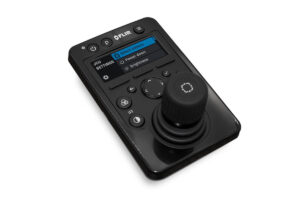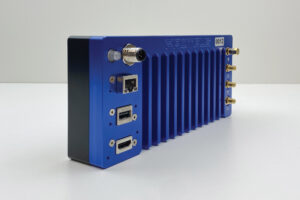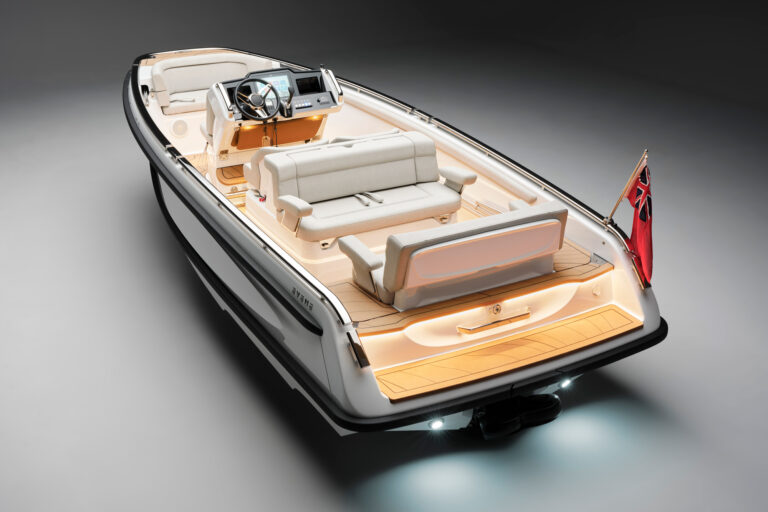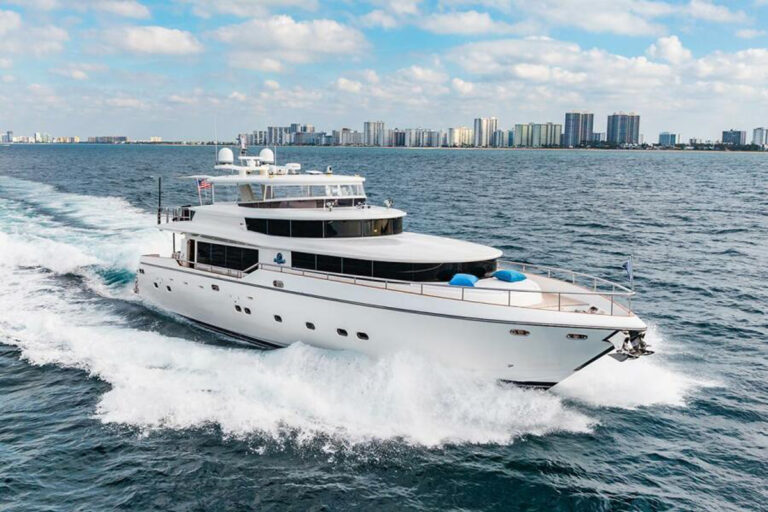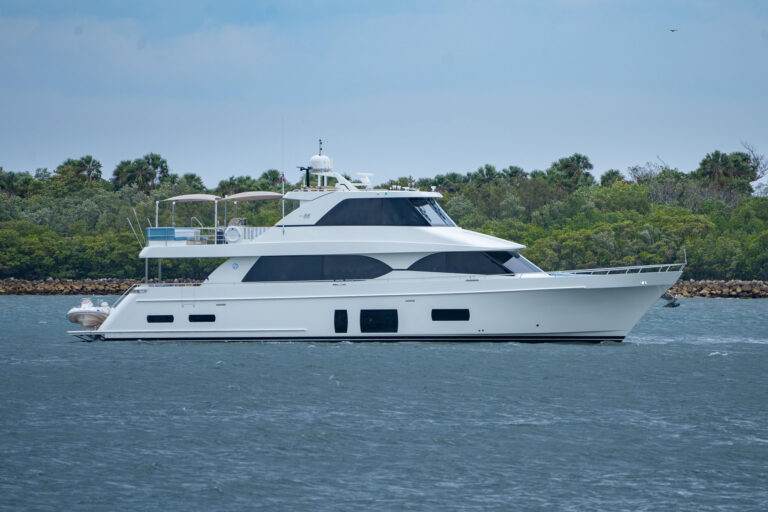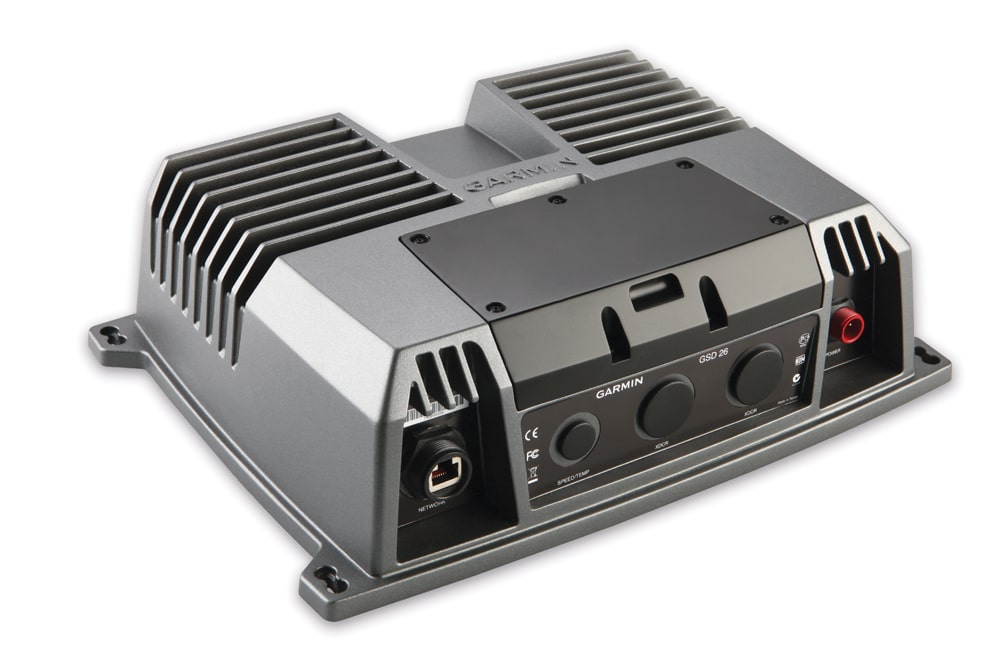
CHIRP Technology
A couple of years ago, Airmar, the company known for its dominance in the transducer market, developed a series of transducers for a prototype fish finder. That development drove the major sonar manufacturers toward a new technology — one that has stood the concept of fish finding on its head: CHIRP sonar technology.
The thing Airmar (www.airmartechnology.com) incorporated into its transducers is called compressed high-intensity radar pulse (CHIRP). The result is true broadband sonar, and it’s going to be a big step forward in viewing the underwater world.
“CHIRP has been used by the military for some time,” says Airmar president Steve Boucher. “Nobody talked about it because the signal processing was too expensive. Three years ago we saw where processing was going with DSP [digital signal processing] — chips are now down below $25 dollars — and decided to come out with broadband transducers.”
So it became incumbent on the sonar companies to come up with transceivers that could take advantage of those transducer capabilities.
This year the first of those appeared on the market, with both Garmin (www.garmin.com) and Simrad (www.simrad-yachting.com) fielding CHIRP sonars for demo at the Miami International Boat Show in February. It’s a game-changing technology. Here’s how it works.
CHIRP sonar is a frequency-modulated pulse that overcomes the limitations of current technology, which relies on a single-frequency pulse bouncing off fish and the bottom. Traditional sonar operates on either 50 kHz, for deepwater fish finding, or 200 kHz, in shallower water. When reading the bottom in 2,000 feet of water at 50 kHz, the amount of energy needed to reach the bottom requires a long sonic pulse: say 130 feet long. Underwater targets that are closer together than the length of that pulse are not going to show up separately on the finder screen. They get lumped together as one image. That’s with the current single-frequency pulse sonar.
CHIRP sonar technology is quite simply a modulated pulse broadcast by the transducer. Instead of firing a 50 or 200 kHz pulse beneath the boat to bounce off things and return at the same frequency, CHIRP technology modulates the pulse so the ping sent by the transducer sweeps across a range of frequencies, say 28 to 60 kHz, or 130 to 210 kHz, or 42 to 65 kHz.
When you modulate a pulse through such ranges — which, incidentally, sounds more like a chirp than a ping — targets that are closer together than the pulse length reflect that pulse at the different frequencies at which they were struck, and each will show up separately on the monitor. That modulation, the pulse sweep from 30 to 70 kHz, is called the bandwidth, thus “broadband sonar.”
The return, or bounce-back, off of a target reflects the frequency at which it was struck, so even two targets close together are going to be returning the ping at differing frequencies. The result is improved separation and detail, far in excess of what is available with traditional single-frequency sonar.
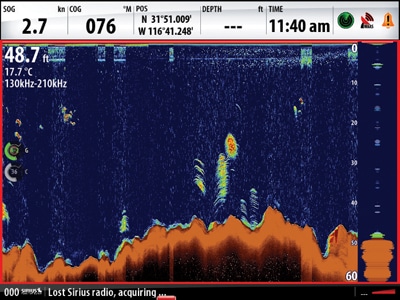
As the frequency modulates, the width of the signal cone changes. Make a V with your index and middle fingers and lay it on your desk. Now move your fingers in and out, changing the distance between your fingertips. That’s the same way that the cone angle changes as the pulse frequency modulates.
Because the modulated pulse is so sensitive to targets, the power needed to drive CHIRP sonar is considerably lower than that of fish finders with traditional 2 kW and 3 kW output. The sonars coming on the market currently operate on 250 to 650 watts of output power. That alone greatly reduces the amount of noise or interference in the image that appears on the fish-finder screen.
Garmin’s flagship product is the GSD 26, a black-box sonar that retails for $2,000. Garmin’s name for its version of CHIRP sonar is Spread Spectrum technology. “We’re able to allow the sport fisherman better target separation and resolution at extraordinary depths, but also allow them to dial into specific frequencies to target certain species of fish,” Garmin’s Greg DeVries says.
“This is our SS broadband fish finder,” he says. “The GSD 26 will be manually tunable from 25 kW to 210 kHz, creating a modulated pulse across the whole range of frequencies for superb resolution and target return.” With traditional fish-finding sonar, DeVries says, when you see the bottom in deep water, you often don’t see what is in the water column above it. With a modulated pulse, you get both: a good view of the bottom and an accurate look at everything between it and your boat. Garmin’s range is transducer-dependent and will therefore also work with the predetermined frequencies in Airmar’s new transducers. The GSD 26 is not a plug-and-play unit. All connections are bare wire, so installation is little more than a morning project in the driveway.
Simrad’s BSM-2 ($2,495) delivers as much as five times greater target resolution than conventional sounders, and Simrad claims it offers bottom readings beyond 10,000 feet.
“The [CHIRP] technology, methodology and signal processing and mechanics are now only possible because we have the transducers,” says Don Korte, senior engineer for Simrad. “A couple of years ago we couldn’t do CHIRP. We didn’t have the sensors.”
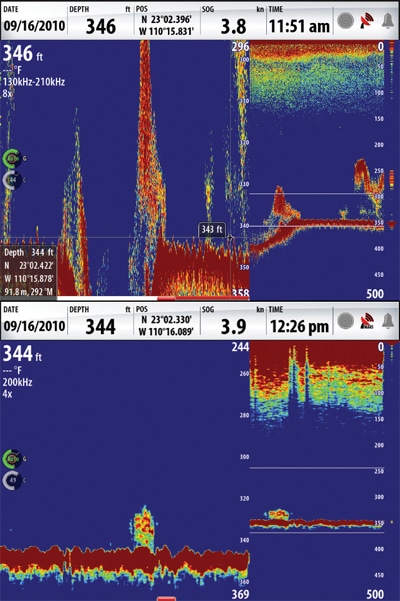
An adjunct to the impressive resolution is the lack of noise or interference in the return image. This is due partially to the modulated frequency of the pulse, but it is also augmented by the low power requirements of the transducers. “We don’t need that much power. These depths are all reached at 250 watts,” Korte says.
While Simrad and Garmin are the only manufacturers that have brought a sounder to market, the rest of them are hot on the trail. “We are working on it but really can’t talk too much about it, other than to say we have used it on the water and it is very cool,” says Eric Kunz, Furuno’s senior product manager (www.furunousa.com). “When you hit the frequency modulation button, the resolution goes through the roof. We are actually picking up squid.”
Geonav (www.geonavmarine.com) says it intends to release CHIRP sonar later this year. Raymarine (www.raymarine.com), without offering any detail, states emphatically for the first time that “Raymarine will be releasing some very innovative sonar products that incorporate CHIRP technology before the end of the year.”
So CHIRP sonar is here to stay. Conversions won’t be a simple matter on most boats. The fish finders are dependent on the transducers, which require a through-hull or in-hull installation. That means a haul-out for larger boats that spend their lives in the water. CHIRP sonar is also a little pricey — it will run you between $4,000 and $5,000 just for the head and the transducer, before installation.
But if you have any real interest in what’s under your boat, either resting on the bottom or swimming beneath you, this new CHIRP sonar technology is where you’ll want to be playing.
Subscribe to the Yachting Life newsletter for cruising and chartering guides, new boat announcements, event updates, special offers and more!

